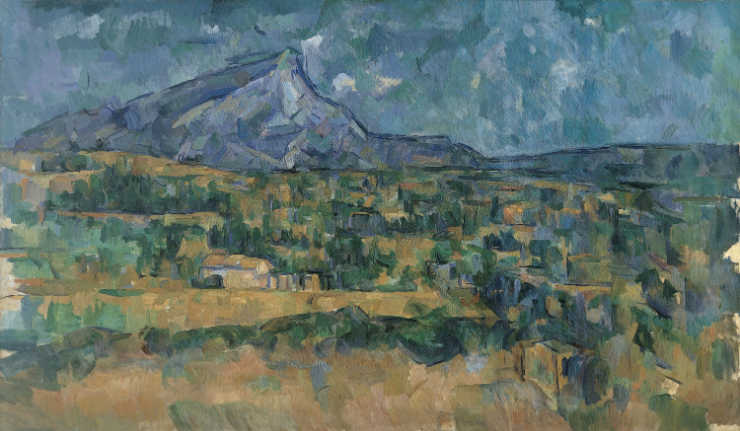
Mont Sainte-Victoire, by Paul Cezanne, 1902-6, French Post-Impressionist painting, oil on canvas. The artist worked on this proto-cubist landscape for over four years. By Everett Collection @ Shutterstock.com
If you want to know how the ultra-wealthy feel about the value of fiat currencies, take a look at the recent auction of the art collection of late Microsoft co-founder Paul Allen. The ultra-wealthy are turning their less-valuable, inflated fiat dollars into hard assets like great works of art. Kelly Crow reports for The Wall Street Journal:
Microsoft co-founder Paul Allen’s estate made auction history on Wednesday when a group of 60 artworks from his estate sold for $1.5 billion, smashing the record for priciest collection ever sold at auction.
Lush landscapes and rare examples by artists like Paul Cézanne, Georges Seurat, Sandro Botticelli and Jasper Johns anchored a sale at Christie’s in New York that reaffirmed the depth of the trophy-hunting art market at a time of broader economic uncertainty.
“He changed the way we live our lives,” Alex Rotter, Christie’s chairman of 20th and 21st century art, said of the personal-computing pioneer. “Now, he’s changed the art market.”
Mr. Allen’s trove surpassed the previous, $922 million record set in May by New York real-estate developer Harry Macklowe and his ex-wife, Linda Macklowe. Whereas the Macklowe holdings were packed with midcentury masters and pop icons like Andy Warhol, Mr. Allen amassed a museum’s breadth of pieces, from old masters to impressionists to American modernism. The sale had been expected to reach $1 billion, the house said.
Seurat’s $149.2 million “Models, Ensemble (Small Version),” proved to be the night’s star. The placemat-size painting of three women from 1888 hints at his larger, earlier scene of the same trio that belongs to Philadelphia’s Barnes Foundation. It was only estimated to sell for $100 million, but four bidders pushed it higher.
The winning telephone bid was fielded by Christie’s specialist Xin Li-Cohen, who often represents bidders from China and the U.S.
Rather than being the sale’s highflying outlier, the Seurat was merely one of five works that topped $100 million. These included a $137.8 million mountaintop vista by Cézanne from 1888-9, “La Montagne Sainte-Victoire,” that sold following a single bid to an anonymous telephone bidder.
Vincent Van Gogh’s 1888 “Orchard with Cypresses” also sold for $117.2 million to a different bidder fielded by Ms. Li-Cohen. Botticelli’s “Madonna of the Magnificat” sold for $48.4 million, well over its $40 million estimate.
Even for the seasoned art establishment, the domino effect of so many big-ticket pieces one after the next lent a surreal atmosphere to the proceedings, with well-heeled collectors holding their cellphones aloft as auctioneer Adrien Meyer or Jussi Pylkkänen brought down the gavel. (In a rare move for an evening sale, the men each took turns at the rostrum.)
Action Line: Protect your money from inflation. If you need help, let’s talk.
E.J. Smith - Your Survival Guy
Latest posts by E.J. Smith - Your Survival Guy (see all)
- “What Do You Do If the Market Crashes?” - April 19, 2024
- Costco Gold Bars Sell Out Despite Premium Price - April 19, 2024
- A Wise Man’s Take on the Boston Bruins Playoff Chances - April 19, 2024
- Is Your Retirement Life a Mess? Let’s Talk - April 18, 2024
- Your Survival Guy Learns from Marie Kondo - April 18, 2024














